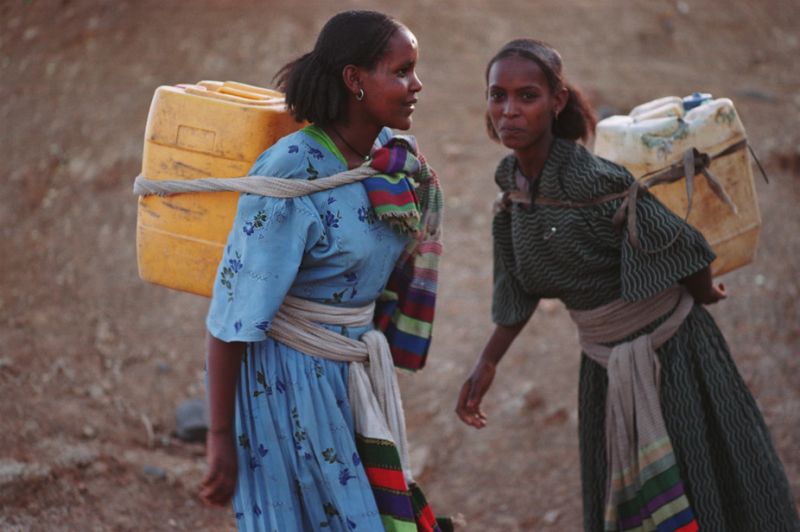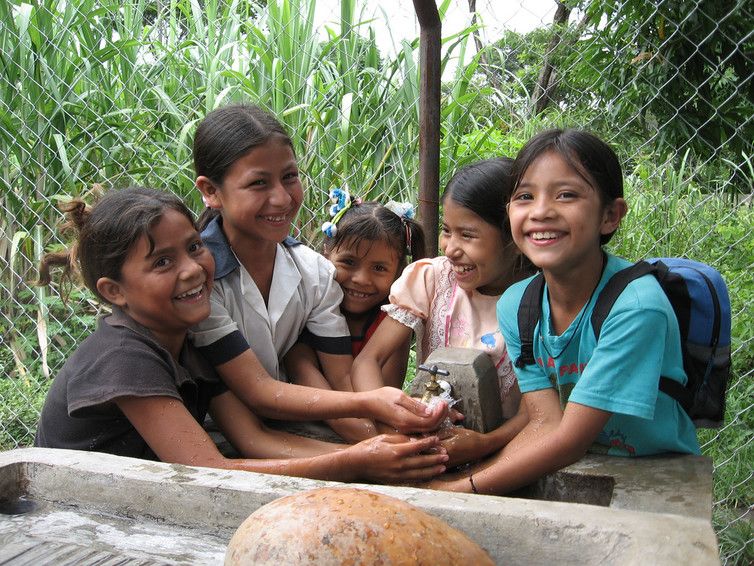Women Still Carry Most of the World's Water
Published on by Water Network Research, Official research team of The Water Network in Academic
According to a new report from UNICEF and the World Health Organization, 2.1 billion people around the world face that challenge of lack of clean water. And the task of providing water for households falls disproportionately to women and girls, especially in rural areas.
Imagine going through your day without access to clean, safe water in your home for drinking, cooking, washing or bathing whenever you need it.
Water, a human right, is critical for human survival and development. A sufficient supply of biologically and chemically safe water is necessary for drinking and personal hygiene to prevent diarrheal diseases, trachoma, intestinal worm infections, stunted growth among children and numerous other deleterious outcomes from chemical contaminants like arsenic and lead.
An insufficient supply of safe and accessible water poses extra risks and challenges for women and girls. Without recognizing the uneven burden of water work that women bear, well-intentioned programs to bring water to places in need will continue to fail to meet their goals.

Image: Ethiopian girls carrying water. Waterdotorg, CC BY-NC-SA
Lost hours
Collecting water takes time. Simply to get water for drinking, bathing, cooking and other household needs, millions of women and girls spend hours every day traveling to water sources, waiting in line and carrying heavy loads – often several times a day.
The new UNICEF/WHO report states that 263 million people worldwide have access to water sources that are considered safe, but need to spend at least 30 minutes walking or queuing to collect their water. Another 159 million get their water from surface sources that are considered to be the most unsafe, such as rivers, streams and ponds. Water from these sources is even more likely to require over 30 minutes to collect.
In a study of 25 countries in sub-Saharan Africa, UNICEF estimated that women there spent 16 million hours collecting water each day. Women in a recent study in Kenya reported spending an average of 4.5 hours fetching water per week, causing 77 percent to worry about their safety while fetching and preventing 24 percent from caring for their children.
Heavy loads
Water is heavy. The World Health Organization recommends 20-50 liters of water per person per day for drinking, cooking and washing. That amounts to hauling between 44 and 110 pounds of water daily for use by each household member.
And in many places, water sources are far from homes. In Asia and Africa, women walk an average of 6 kilometers (3.7 miles) per daycollecting water. Carrying such loads over long distances can result in strained backs, shoulders and necks, and other injuries if women have to walk over uneven and steep terrain or on busy roads.
Fetching water can also be very dangerous for women and girls. They can face conflict at water points and the risk of physical or sexual assault. Many of these dangers also arise when women do not have access to safe, clean and private toilets or latrines for urinating, defecating and managing menstruation.

Image: Girls wash at school water tap, Honduras. Water.org, CC BY-SA
Global demand for water is increasing. The United Nations forecasts that if current water use patterns do not change, world demand will exceed supply by 40 percent by 2030. In such a scenario, it is hard to imagine that women’s and girls’ experiences will improve without intentional efforts.
A focus on women’s needs
When communities initiate programs to improve access to water, it is critical to ask women about their needs and experiences. Although women and girls play key roles in obtaining and managing water globally, they are rarely offered roles in water improvement programs or on local water committees. They need to be included as a right and as a practical matter. Numerous water projects in developing countries have failed because they did not include women.
Source: The Conversation
Media
Taxonomy
- Potable
- Water & Sanitation
- Sanitation & Hygiene
- Sanitation & Hygiene
- Drinking Water Managment
- Drinking Water
- Sanitation and Hygiene
- Water Sanitation & Hygiene (WASH)